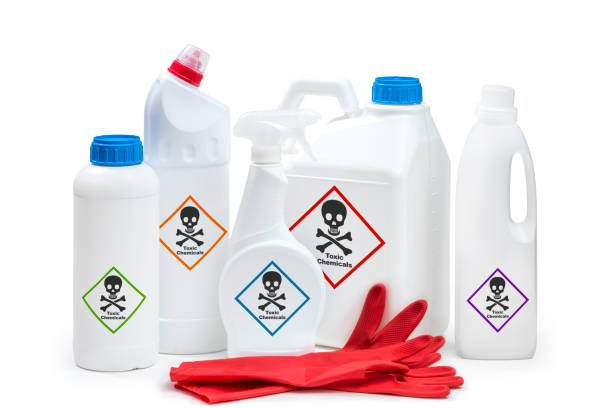Ethylbenzene

Parameter Type: Drinking Water Testing for Volatiles
Parameter Name: Ethylbenzene
What it is and Where it Comes From:
Ethylbenzene is an organic compound with the formula C6H5CH2CH3. It is a highly flammable, colorless liquid with an odor like that of gasoline. This monocyclic aromatic hydrocarbon is important in the petrochemical industry as an intermediate in the production of styrene, the precursor to polystyrene, a common plastic material. Occupational exposure to ethylbenzene occurs in factories that use ethylbenzene to produce other chemicals; for gas and oil workers; and for varnish workers, spray painters, and persons involved in gluing operations. Exposure to ethylbenzene occurs from the use of consumer products, gasoline, pesticides, solvents, carpet glues, varnishes, paints, and tobacco smoke. Drinking water testing gives you several benefits like peace of mind, identifying contaminants in your water, and insight into health concerns. Safe Home offers Laboratory drinking water testing kits for Ethylbenzene, allowing you to collect your water sample and ship it directly to our EPA-Certified Laboratory. This platform of drinking water testing for Ethylbenzene will give you an accurate level based on the lowest level of a parameter our instruments can detect (Method Detection Level). Safe Home drinking water testing for volatiles can be used for city and well water supplies. Drinking water testing should be done any time you notice a significant change in your water quality.
Health Effects:
Tests involving acute exposure of rats have shown ethylbenzene to have moderate toxicity from oral exposure. The only available human cancer study monitored the conditions of workers exposed to ethylbenzene for 10 years, with no tumors reported. However, no firm conclusions can be made from this study because exposure information was not provided, and 10 years is insufficient for detecting long latency tumors in humans. EPA has classified ethylbenzene as a Group D, not classifiable as to human carcinogenicity. In one study scientist found, exposure to ethylbenzene by inhalation resulted in a clearly increased incidence of kidney and testicular tumors in male rats, and a suggestive increase in kidney tumors in female rats, lung tumors in male mice, and liver tumors in female mice.
Solutions to Contaminant Levels:
You have completed the drinking water testing process, what are the next steps? A filter with granular activated carbon (GAC) is a proven option to remove certain chemicals, particularly organic chemicals, from water. GAC filters also can be used to remove chemicals that give objectionable odors or tastes to water such as hydrogen sulfide (rotten eggs odor) or chlorine. Reverse osmosis is a process that removes foreign contaminants, solid substances, large molecules, and minerals from water by using pressure to push it through specialized membranes. Here’s how reverse osmosis works. Unlike osmosis, which is a passive process, reverse osmosis requires external force (pressure) to work. Pressure is applied to a highly concentrated solute solution, such as salt water, to pass through a membrane to a lower concentrate solution. The membrane allows water to flow through but blocks out larger molecules, like contaminants. The reverse osmosis process leaves higher concentrations of solute on one side and only the solvent, or freshwater, on the other. Who do I need to contact to find out more information about water quality in my area? Every community water supplier must provide an annual report to its customers, known as a Consumer Confidence Report (CCR). The report provides information on your local drinking water quality, including the water’s source, contaminants found in the water, and how consumers can get involved in protecting drinking water. How often does the local public water system preform drinking water testing? Frequency of drinking water testing depends on the number of people served, the type of water source, and types of contaminants. Certain contaminants are tested more frequently than others, as established by the Safe Drinking Water Act. You can find out about levels of regulated contaminants in your treated water for the previous calendar year in your annual Consumer Confidence Report (CCR).


